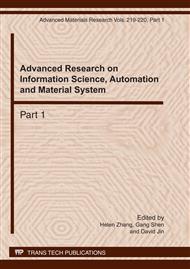p.183
p.187
p.191
p.195
p.202
p.206
p.210
p.214
p.219
Constructing Domain Ontology of E-Business Based on Rough Concept Lattices
Abstract:
Variable precision rough set (VPRS) model and formal concept analysis are studied in this paper, include algorithm of reduction attribute and extraction rule. The traditional algorithms about attribute reduction based on discernibility matrix and extraction rule in VPRS are discussed, there are problems in these traditional algorithms which are improved. Rough concept lattice model is proposed based on integrating of variable precision rough set model and formal concept analysis, and is used to reduce formal context. The domain ontology model of e-business is built combined with knowledge of domain expert, and original ontology model of the United Nations Standard Products and Services Classification Code by way of core ontology in order to enhance system robustness and efficiency.
Info:
Periodical:
Pages:
202-205
Citation:
Online since:
March 2011
Authors:
Price:
Сopyright:
© 2011 Trans Tech Publications Ltd. All Rights Reserved
Share:
Citation:


